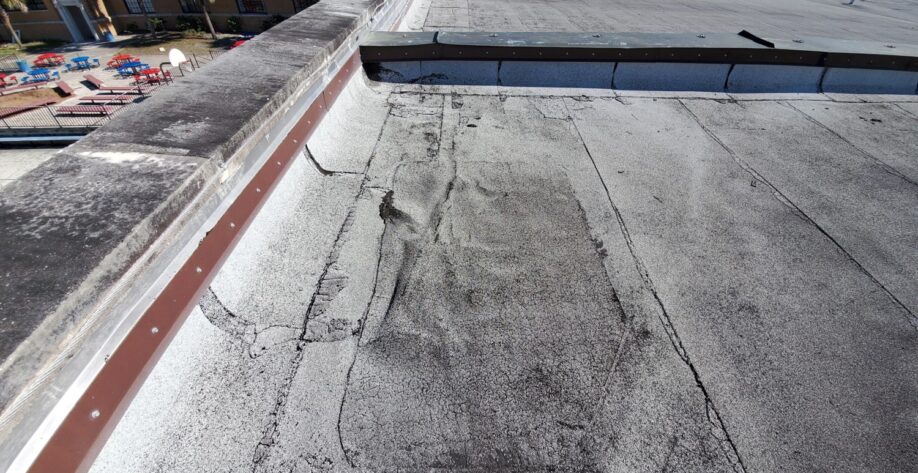Blisters within bitumen-based roofing systems originate with the formation of a void, or unadhered area between the felt plies, or between the substrate and the membrane. Voids can be created by improper adhesion during application, improper mopping viscosity or moisture present in or on the felts, unfilled insulation joints, or coverage of loose or trapped particles of debris under the membrane.
In bitumen-based systems, the dynamics of blister expansion is a cyclical process. Blister growth is dependent on the presence of moisture and the expansion of that water vapor contained within the void.
Blisters by definition do not leak as the void is contained or trapped within the roof plies; however, if blisters grow/expand, they can rupture, allowing water intrusion into the roofing system. The question becomes, should a blister that has not ruptured be repaired?
There is currently no industry standard that provides a concise answer to this question. The roofing industry appears to be in agreement, that if a blister has ruptured it must be repaired. The decision to repair blisters that have not been ruptured has typically been left up to the judgment of the manufacturer, the contractor and the owner.
The following are some characteristics that may determine the need to repair blisters:
- Migration or loss of gravel or surfacing on the membrane as the blister expands. Exposed bituminous membranes will age from UV degradation.
- Membrane deterioration.
- Blisters that occur within the membrane laps (blisters that occur at membrane laps can have reduced lap coverage and seam fail under tension).
- Blisters that have ruptured.
- Blisters that have fatigue cracking, (i.e., when the blister starts to crack due to stretching in the membrane).
- Blisters that occur in areas of high traffic areas (i.e., around serviceable mechanical equipment as foot traffic can damage/break the blister).
Tagged In:
Building Enclosure Design & Consulting
